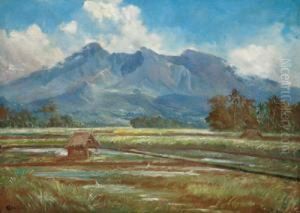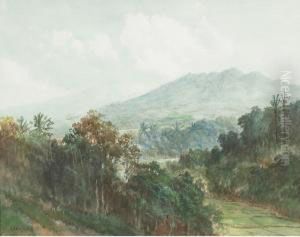Abdullah Soerjosoebroto Paintings
Abdullah Soerjosoebroto was an Indonesian painter born in the year 1878 near Semarang, in the Dutch East Indies, now known as Indonesia. He was part of the pioneering generation of Indonesian artists who were active during the late colonial period and were influential in the development of modern Indonesian art. His work is often associated with the Mooi Indie (Beautiful Indies) style, which depicted idealized, romantic scenes of the Indonesian landscape and rural life, resonating with both colonial and indigenous viewers.
Abdullah was initially trained in drawing and painting by his uncle, the Javanese painter Raden Saleh, who was considered one of the foremost artists of the Dutch East Indies and was known for his romantic style and orientalist themes. Under the guidance of his uncle, Abdullah developed his skills and later furthered his artistic education when he moved to the Netherlands. There, he was exposed to various European artistic movements and techniques, which he blended with his Javanese sensibilities upon his return to Indonesia.
During his career, Soerjosoebroto was known for his landscapes and genre scenes that captured the tranquility and beauty of the Indonesian environment. His paintings often featured rural settings, traditional Javanese architecture, and scenes of daily life, rendered with a sensitivity to light and atmosphere that was influenced by his European training and the impressionist movement. Despite the idealized nature of his work, Abdullah's art was appreciated for its authenticity and was considered a celebration of the indigenous landscape and culture.
Abdullah Soerjosoebroto remained an influential figure in Indonesian art until his death in 1941. His legacy continues through his contributions to the local art scene and his influence on subsequent generations of Indonesian artists. His works are considered national cultural treasures and can be found in various art collections, museums, and galleries throughout Indonesia and beyond.

